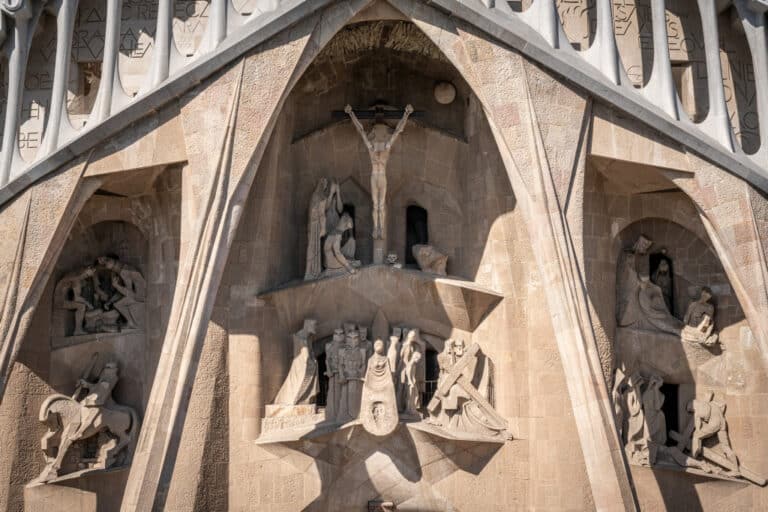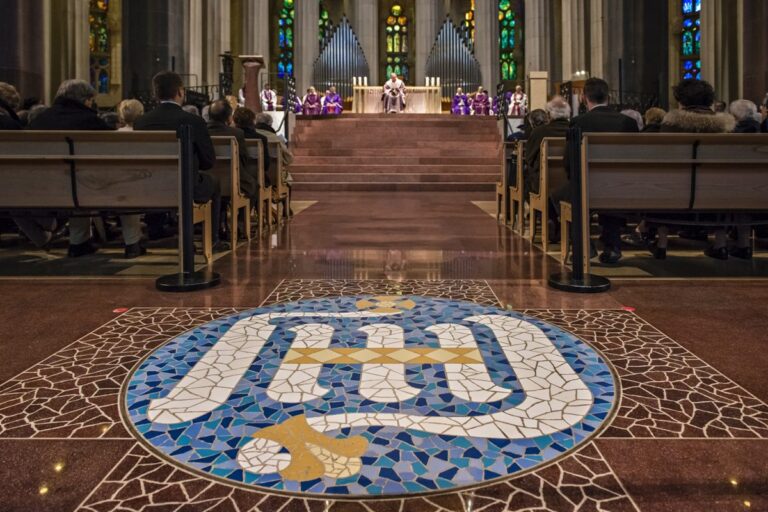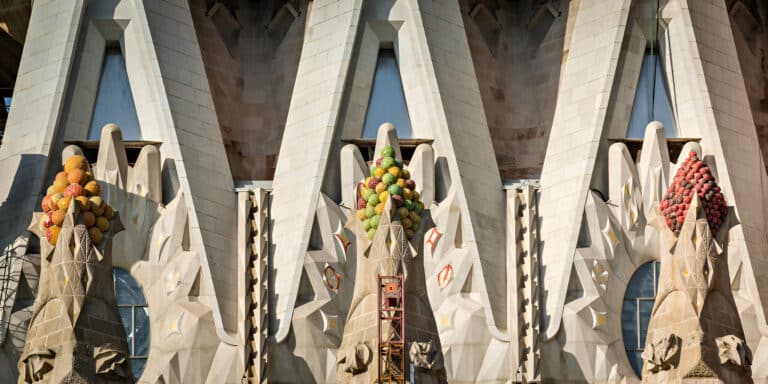Symbology

Passion façade: a journey through Jesus final days
Find out the meaning of the passion façade scenes of the Sagrada Familia

JMJ monogram, symbol of the Sagrada Família
The monogram with the initials of Jesus, Mary and Joseph has become a symbol of the Sagrada Família

Which fruits are on the side naves of the Sagrada Família?
Did you know that fruits such as cherries, peaches, and oranges are present at the Sagrada Familia?
Subscribe to the blog newsletter
Get the latest news on construction, stories and fun facts about the Basilica of the Sagrada Família in your inbox.
